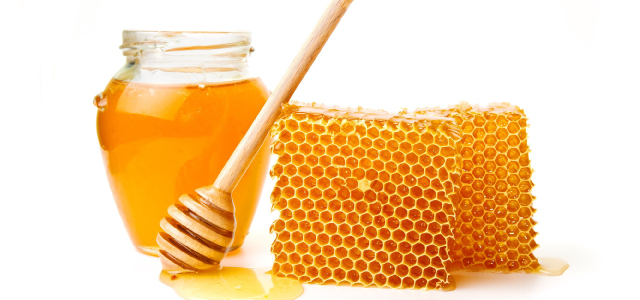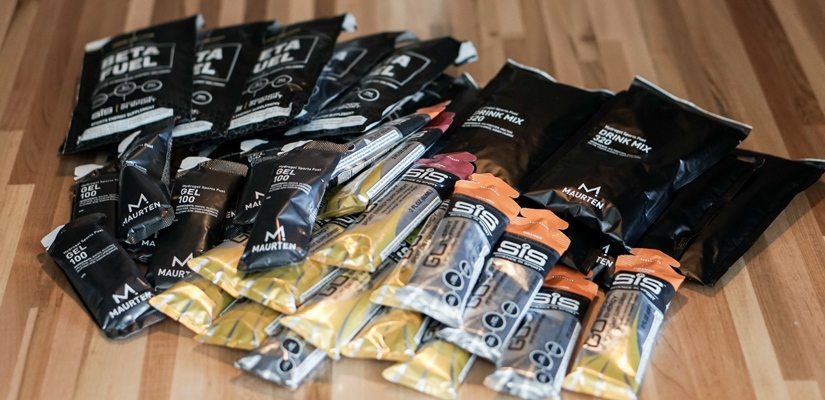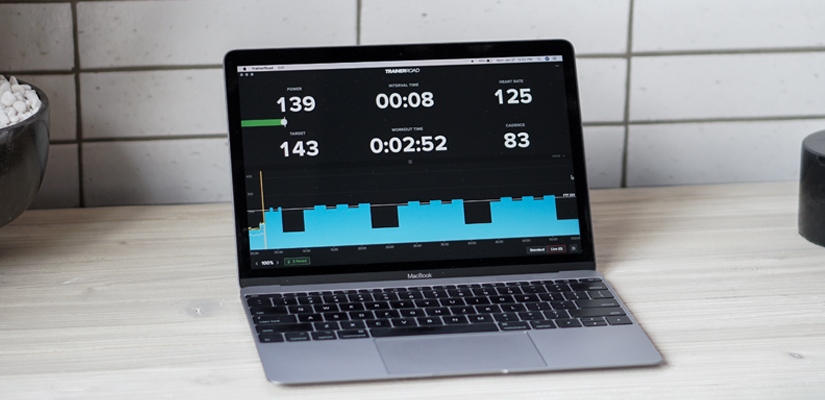10 Regular Food Fuel Options

Believe it or not, you may have the perfect fuel for your next run or ride sitting in your pantry right now. A “regular” food. You may not have to search through the sports nutrition aisle at your local shop or market. It’s possible that you can take a “regular” food, add a bit of salt, and come out with something as good as or even better than an engineered gel or bar. Or, you may simply find more variety by using a combination of regular foods and engineered fueling options. Are you ready to dig through your own shelves?
Before you do, let’s discuss what you’ll be looking for. You’ll want easy-to-digest carbohydrates. These are the primary fueling nutrients for most rides and runs, and you don’t want anything that may cause stomach upset. You’ll want a food that you enjoy eating. It needs to be easy to carry and consume while training. And lastly, it shouldn’t be too heavy or too big.
In addition to carbohydrates, it’s nice if a fuel provides at least a bit of salt. Not only will it provide a satisfying taste while training, it can help replenish at least some of the sodium lost during training and improve the absorption of both carbohydrates and fluids in the intestines. On average, you likely lose about 1000 milligrams of sodium per liter of sweat. This can add up to large sodium deficiencies for the athlete who sweats at a rate of 24-32 ounces per hour.
Most regular carbohydrate foods lack adequate sodium to quality as a well-rounded fuel. So, we’ll add it with just a pinch of salt. In fact, just 1/12 teaspoon of salt adds 200 milligrams of sodium.
Start with a “regular” food, add some salt, and pack your new fuel option for training. Doesn’t get much easier. Here are 10 easy options to start:
Top 10 ”Just Add Salt” Training Fuel Recipes:
1) Dates & Mango Strips
Place 4-5 large Dates or Mango Strips in a small baggie. Add in 1/12 teaspoon salt (estimate 1/3 of a 1/4 teaspoon for 1/12, or measure 0.5 grams on a scale ). Now you’ve got approximately 30 grams carbohydrates and 200 milligram sodium.
2) Rice
Rice is a concentrated source of carbohydrates; just 2/3 cup cooked rice provides 30 grams carbohydrates. If you’re cooking rice for a dinner anyway, save 2/3 cup for your next ride or run (freeze if not used within 48 hours). Add 1/12 teaspoon (0.5 gram) salt to 2/3 cup, smash into tight balls and take it with you in baggies. These rice balls are savory instead of sweet providing 30 grams carbohydrates and 200 milligrams sodium. As an alternative, you can add just 1/2 teaspoon liquid aminos or soy sauce to rice instead of salt.
3) Juice and Water
This is an easy and refreshing drink option for shorter training, up to two hours. Pour 10-12 ounces 100% juice or organic lemonade in a bottle and add the same amount of water. Add 1/8 teaspoon salt. With 24 ounces fluid including 12 ounces juice and 12 ounces water, you’ve got 45 grams carbohydrates and up to 300 milligram sodium. Of course, fruit juice has quite a bit of fructose, anywhere from a 2:1 to a 1:1 fructose:glucose ratio. This may not be optimal for really long rides, and may even cause stomach issues in some athletes. However, with the salt added, most will find it highly effective, readily exiting the stomach and providing fuel to the cells. It hydrates, provides nutrients, and tastes great!
4) Licorice
Salted licorice is a delicious, not-too-sweet anti-nausea fuel choice. Simply add 1/12 teaspoon (0.5 gram) salt to 10 pieces of all-natural licorice. In no time, you’ve got 25-30 grams carbohydrates and 200 milligram sodium per serving.
5) LARA Bars
Some may consider these an “engineered” bar, but with only a handful of ingredients and without the usual addition of so-called “energy enhancing” chemicals, it’s easy to consider these more of a real-ingredients-mashed-together-regular-food. Remove packaging and add 1/12 teaspoon (0.5 gram) salt across the length of the bar. Fold bar over itself. Store in a baggie and consume when needed for 23-30 grams carbohydrates, 4-8 grams protein, and 200-250 milligrams sodium.
6) Sweet Potatoes
Take baked sweet potatoes (another leftovers options), mash and add salt. Just 1 cup mashed sweet potatoes with 1/12 teaspoon salt (0.5 gram) will provide 30 grams carbohydrates and 200 milligram sodium. Place it in a small baggie, seal it, and squeeze it out like a gel during your work out.
7) Fruit Strips
There are plenty of all natural, 100% fruit, dehydrated fruits strips available in stores these days. Cut the strip in half width-wise, add 1/12 teaspoon (0.5 gram) salt, and top with the other cut piece (a fruit strip/salt sandwich) for up to 25 gram carbohydrates and 200 milligram sodium.
8) Natural Fig Newtons
Fig Newtons are another not-too-sweet fueling option. The only drawback is that they can feel a bit dry in the mouth when training, so make sure to have fluids to consume as well. Add 1/12 teaspoon (0.5 gram) total salt to 2 fig newtons and you’ll get 20-25 grams carbohydrates and 200 milligram sodium to keep you moving.
9) Honey
An all-time favorite all-natural gel; just add salt and a bit of water to make it a complete training fuel. Place 2 tablespoons honey in a gel flask along with a teaspoon or so of water (this makes it easy-to-squeeze) and 1/12 teaspoon (0.5 gram) salt. It’ll provide 30 grams carbohydrates and 200 milligram sodium with each 2 tablespoon squeeze.
10) Coconut Water
Most coconut waters provide carbohydrates, sodium, and a lot of potassium. Naturally flavored (100% fruit juice or fruit puree) varieties provide extra carbohydrates and a great taste. Pour 16 ounces fruit flavored coconut water (such as Vita Coco coconut water with peach and mango) in your water bottle. Fill to the top with water and add 1/12 teaspoon (0. 5 gram) salt. You’ll get 30 grams carbohydrates, 290 milligram sodium, and a whopping 920 milligram potassium per bottle.


